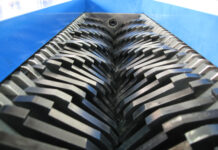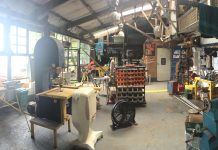Advantages of EOT
“Everybody loves progress, but nobody likes change” is the kind of phrase you might find in a fortune cookie, but it also largely represents feelings towards energy efficiency in industry right now. While businesses want to reduce their impact on the environment, there are also strong feelings opposed to implementing brand new energy efficient automation systems, when the current equipment still works.
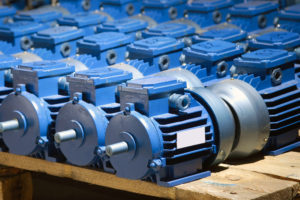 Here, Jonathan Wilkins, marketing director of industrial spares supplier European Automation, talks about the alternative: Eco Obsolete Technology (EOT), and the important role it’s playing in keeping industry energy efficient.
Here, Jonathan Wilkins, marketing director of industrial spares supplier European Automation, talks about the alternative: Eco Obsolete Technology (EOT), and the important role it’s playing in keeping industry energy efficient.
Cutting industry’s carbon footprint is incredibly important and it’s a common goal we’re all pulling towards. However, nobody wants to be forced into a drastic change like a costly system upgrade, when they could instead make smaller revisions to significantly improve efficiency.
This is where Eco Obsolete Technology comes in. EOT refers to automation parts and components that comply with current standards of energy efficiency, despite no longer being produced by their original equipment manufacturer (OEM).
In 2014, industry’s share of total US greenhouse gas emissions was 29 per cent, making it the largest contributor of greenhouse gases of any sector. You might think this a large figure, but the sector is slowly becoming greener due to regulations and standards that aim to make the industry eco-friendlier.
Compliance
Energy audits are becoming common industry practice around the world. Let’s say in your company’s energy audit, an electric motor is found to be highly inefficient and not compliant with energy regulations. You could get rid of the motor completely and risk overhauling other parts of the system so as to ensure compatibility. This is the all or nothing approach to compliance. Or you could seek a simpler, quicker and cheaper option.
By sourcing a compatible variable speed drive (VSD) and retrofitting it to the motor, you reduce the energy usage and comply with energy efficiency regulations. Two energy efficiency birds with one EOT stone.
But it’s not just mandatory energy efficiency schemes that EOT is helping companies meet. Businesses complying to the more proactive ISO 50001 standard can also reap the benefits of obsolete technology.
Reduced downtime
For those of you that love a good paradox, you need look no further than automation in industry. Concepts like the Internet of Things (IoT) and Industry 4.0 are driving innovation 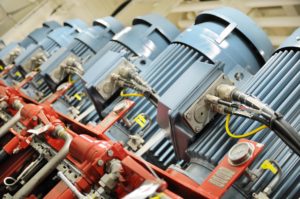 in automated technologies – so much so that parts sometimes become obsolete after just a few years. Yet industrial manufacturing systems can also often live to see 40.
in automated technologies – so much so that parts sometimes become obsolete after just a few years. Yet industrial manufacturing systems can also often live to see 40.
If manufacturing facilities were upgraded every time new parts came out, they would be bankrupt before components were even unpacked from the boxes. Similarly, those relying on dated systems run the risk of falling behind in terms of production speed and ease. The key is a happy combination of the two: progress rather than change.
By using EOT instead of implementing costly upgrades every time, factories can avoid the downtime that would be incurred when setting up a new system, while also reducing their carbon footprint and looking after the pennies.
For industries in which upgrades are often too convoluted to be worthwhile due to procedures and regulations – like pharmaceutical manufacturing, nuclear and medical – EOT is crucial for keeping everyday operations efficient and affordable.
Savings
When it all comes down to it, being energy efficient is about both looking at the bigger picture and the here and now. Utilizing EOT within an automated system can save money by providing an alternative to expensive new technology and reducing energy bills.
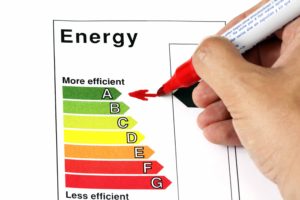 Sourcing a part, especially if you work with an industrial automation spares supplier, can mean products are with you within 48 hours, drastically reducing downtime and the associated costs.
Sourcing a part, especially if you work with an industrial automation spares supplier, can mean products are with you within 48 hours, drastically reducing downtime and the associated costs.
More importantly, by using EOT, companies can reduce their impact on the environment sooner rather than later. EOT negates the need for board level discussions into efficiency upgrades, that often only result in one of the most disliked of business idioms – “let’s put a pin in it”. Roughly translated as, “come back to me when the situation is critical.”
EOT is giving industries the chance to make energy efficiency improvements now because they embody progression, not drastic change.
About EU Automation
EU Automation stocks and sells new, used, refurbished and obsolete industrial automation spares. Its global network of preferred partner warehouses, and wholly owned distribution centers, enables it to offer a unique service within the automation industry, spanning the entire globe. It provides worldwide express delivery on all products meaning it can supply any part, to any destination, at very short notice.
For more information, visit www.euautomation.com









